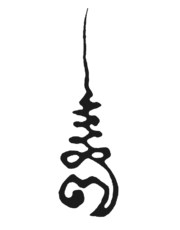
Back Thailändische Waldtradition German Tradición tailandesa del bosque Spanish Tai metsatraditsioon Estonian Moines de la forêt French Thai erdei hagyomány Hungarian Tradisi Hutan Thai ID Monaci della foresta Italian Thaise Bostraditie Dutch Tajska tradycja leśna Polish Tradição Tailandesa das Florestas Portuguese
This article has multiple issues. Please help improve it or discuss these issues on the talk page. (Learn how and when to remove these template messages)
|
 | |
| Type | Dhamma Lineage |
|---|---|
| School | Theravada Buddhism |
| Formation | c. 1900; Isan, Thailand |
| Lineage Heads |
|
| Founding Maxims | The customs of the noble ones (ariyavamsa) The Dhamma in accordance with the Dhamma (dhammanudhammapatipatti) |
| Thai Forest Tradition | ||||||||||||||||||||||||||||||||||||||||
|---|---|---|---|---|---|---|---|---|---|---|---|---|---|---|---|---|---|---|---|---|---|---|---|---|---|---|---|---|---|---|---|---|---|---|---|---|---|---|---|---|
 | ||||||||||||||||||||||||||||||||||||||||
| Bhikkhus | ||||||||||||||||||||||||||||||||||||||||
|
||||||||||||||||||||||||||||||||||||||||
| Sīladharās | ||||||||||||||||||||||||||||||||||||||||
|
||||||||||||||||||||||||||||||||||||||||
| Related Articles | ||||||||||||||||||||||||||||||||||||||||
The Kammaṭṭhāna Forest Tradition of Thailand (from Pali: kammaṭṭhāna [kəmːəʈʈʰaːna] meaning "place of work"), commonly known in the West as the Thai Forest Tradition, is a lineage of Theravada Buddhist monasticism.
The Thai Forest Tradition started around 1900 with Ajahn Mun Bhuridatto, who wanted to practice Buddhist monasticism and its meditative practices, according to the normative standards of pre-sectarian Buddhism. After studying with Ajahn Sao Kantasīlo and wandering through the northeast of Thailand, Ajahn Mun reportedly became a non-returner and started to teach in Northeast Thailand. He strove for a revival of the Early Buddhism, insisting on a strict observance of the Buddhist monastic code known as the Vinaya and teaching the practice of jhāna and the realization of nibbāna.
Initially, Ajahn Mun's teachings were met with fierce opposition, but in the 1930s his group was acknowledged as a formal faction of Thai Buddhism, and in the 1950s the relationship with the royal and religious establishment improved. In the 1960s, Western students started to be attracted to the movement, and in the 1970s branch monasteries of the tradition began to be established in the West.
Underlying attitudes of the Thai Forest Tradition include an interest in the empirical effectiveness of practice, the individual's development, and the use of skill in their practice and living.[citation needed]
© MMXXIII Rich X Search. We shall prevail. All rights reserved. Rich X Search